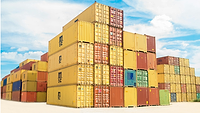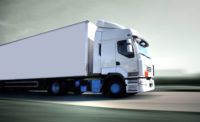Preventing cargo theft

The world economy is dependent on the safe and secure movement of cargo, from the raw materials needed to feed people and manufacture products to the delivery of finished goods to end users. Anything that disrupts the free flow of trade can have costly, long-term impacts on the entire supply chain.
Some unmanageable events, such as severe weather and accidents, create significant problems. The recent unintended blockage of the Suez Canal lasted two weeks at an estimated cost to the world economy of $400 million per hour.
However, we can strive to control criminal activities targeting vessels, vehicles, storage facilities and the people involved in the movement of goods. Existing security protocols and technologies help protect the supply chain from theft by local gangs to international criminal organizations. Criminals look for any edge to succeed. According to some experts, 60% of all cargo losses result from supply chain employees providing inside assistance.
Each segment of the logistics and transportation industry has specific threats. As goods are moved by land, truck drivers face hijackings, robberies and thefts from and of vehicles, among other risks. Thefts may occur as trucks are being loaded or unloaded, in route or while parked.
A recent survey by a British supply chain intelligence provider estimates trucks were targeted in seven of 10 cargo thefts worldwide in 2020. U.S. data from the National Insurance Crime Bureau shows 8,676 cargo vehicles were stolen in 2017 – about 24 per day. Total U.S. losses from cargo theft range up to $35 billion annually.
Here are some tips for reducing thefts involving trucks. Run background checks on all drivers and provide training in basic security protocols. Drivers should stop as infrequently as possible and then only at destinations and in busy, public areas. GPS tracking devices placed on trucks and cargo enable carriers to locate stolen goods. Locked wheel boots make it difficult to steal a vehicle while a driver takes a break. At the same time, electronic devices placed in the cab activate a truck’s braking system, immobilizing the vehicle until the driver enters a PIN code.
The British study found that in 2020, a quarter of worldwide cargo thefts occurred in facilities such as warehouses. About one in seven cargo thefts in the U.S. originated in warehouses. The top targeted items included food and beverages, electronics, consumer products, and alcohol and tobacco. Here’s another concern about cargo theft: thieves targeting food, beverages and pharmaceuticals don’t worry about expiration dates. By the time stolen goods reach the market, consumers could purchase expired items with potentially harmful health implications.
There are proven security devices and protocols that work at warehouses. Ensure keys and access cards are collected, and any PIN codes are changed immediately upon an employee’s termination. These simple steps make it much harder for former employees to steal warehoused goods.
Other security tips include keeping the warehouse interior, perimeter fences, parking lots and exterior entries well lit. Darkness makes it easier for criminals to go unnoticed. Also, maintain the structure, including the immediate replacement of broken locks and windows.
Video surveillance is a great way to monitor critical areas such as entries and loading docks – areas where goods enter and leave the warehouse. Combined with good lighting, surveillance cameras provide real-time and recorded images of events around the clock. Many operators of large warehouses use intelligent video analytics to monitor activity automatically. However, up to 98% of camera-based analytic alerts are false alarms, which take employees away from other essential duties.
Artificial intelligence and its subsets, machine learning and deep learning are trained to recognize the movements of humans and vehicles, reducing false alarms by more than 90%. Warehouses are busy places, so adapt the analytics to create alerts only when motion is detected in areas such as remote parking lots or little-used entries. The software can be set to monitor by time, for example, overnight and on holidays when employees are not expected.
Shrinkage is a costly issue for most supply chain businesses. That chain is only as strong as its weakest link, and there are plenty of opportunities within the movement of goods for criminals to exploit. Better security can limit theft and vehicle damage, resulting in lower insurance premiums and greater profitability.
This article originally ran in Security, a twice-monthly security-focused eNewsletter for security end users, brought to you by Security Magazine. Subscribe here.
Looking for a reprint of this article?
From high-res PDFs to custom plaques, order your copy today!





